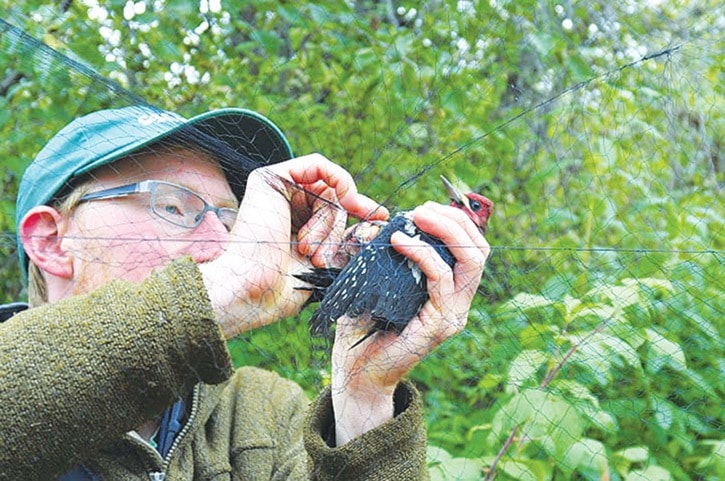After a record-breaking summer of research, the Tatlayoko Lake Bird Observatory is shutting down for the season and possibly forever.
The observatory has monitored bird population data for the past decade, operating under the wing of the Nature Conservancy of Canada.
But now, funding has not been found for it to continue, and it faces an uncertain future.
This summer researchers documented and banded a record-breaking number of migrating Western Tanagers, American Robins and Swainson’s Thrushes returning to the Tatlayoko Valley this spring. It was also a banner summer for insect-eating birds such as flycatchers and swallows.
The observatory is located in the Chilcotin 250 kilometres west of Williams Lake and costs $17,000 per year to operate.
It is staffed by two professional banders and a cadre of volunteer naturalists who tracks birds and population patterns to provide important information about climate and habitat well-being.
Avery Bartels, who has worked at the station since 2010, and has been the chief bander for the past two years, gathering good information about birds’ migration patterns says research takes a minimum of 10 years, and ideally, should be longer.
“The longer the project goes on, the more valuable the data becomes,” says Bartels, explaining that the Canadian Migration Monitoring Network (CMMN), a national organization, uses data from bird observatories across Canada that have been in operation for 10 years or more.
Bruno Drolet of the CMMN said TLBO currently provides trend data for 152 regular migrant species, nearly one third (41) of which are considered to be top priority for landbird monitoring in Canada.
“This is a very significant contribution to landbird management,” he said. In the past 10 years, the TLBO banded a record 16,216 birds.
“This 10 year mark is widely regarded as the threshold at which point the data starts to become usable,” says Bartels, adding that now is the time to begin building a long-term database, not shutting down the research.
“It is important now more than ever that the station carries on, so as to get the most out of the great work that has already been accomplished,” says Bartels. “The amount of time and effort required to build them up is nothing to take lightly and discontinuing a project of this scale should only occur when all avenues have been pursued.”
Andrew Harcombe, who worked with the Nature Conservancy of Canada to start the Tatlayoko Lake Bird Observatory and ran it until his retirement earlier this year, wrote in his blog that “Specific funds for running the TLBO have never been secured; funding to date has been cobbled together from existing funds and discretionary sources. Because discretionary funding is often hard to acquire, future funding for TLBO is in doubt.”
Since inception in 2006, the TLBO has banded 15,196 birds, representing more than 140 species.
The Nature Conservancy is looking for partner organizations that may be able to help keep the observatory in flight. For more information visit www.natureconservancy.ca/bc.
